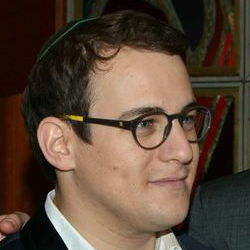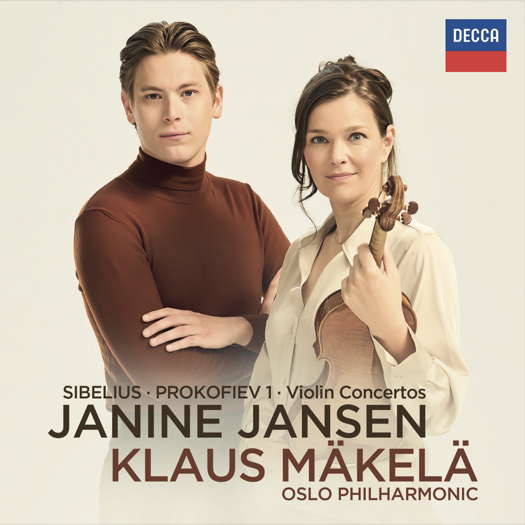- Arthaus Musik
- Claudio Ambrosini
- Jeanne Ellison Butcher
- Harold Schonberg
- Wang Kun
- Skalkottas
- Caracal
- Justin Connolly: Tesserae C
 DISCUSSION: What is a work? John Dante Prevedini leads a discussion about The performing artist as co-creator, including contributions from Halida Dinova, Yekaterina Lebedeva, Béla Hartmann, David Arditti and Stephen Francis Vasta.
DISCUSSION: What is a work? John Dante Prevedini leads a discussion about The performing artist as co-creator, including contributions from Halida Dinova, Yekaterina Lebedeva, Béla Hartmann, David Arditti and Stephen Francis Vasta.
 SPONSORED: Ensemble. Melting Rhapsody - Malcolm Miller enjoys Jack Liebeck and Danny Driver's 'Hebrew Melody' recital, plus a recital by David Aaron Carpenter.
SPONSORED: Ensemble. Melting Rhapsody - Malcolm Miller enjoys Jack Liebeck and Danny Driver's 'Hebrew Melody' recital, plus a recital by David Aaron Carpenter.
All sponsored features >>

Beautiful Writing
GEOFF PEARCE listens to Janine Jansen playing Sibelius and Prokofiev violin concertos
'... something quite magical.'
I was quite excited to receive this recording. I have loved both concertos since my youth, and two of my favourite artists performing with the Oslo Philharmonic was too good an opportunity to pass up. Did this recording live up to my expectations? I have to say that it did.
The Sibelius concerto was first performed in 1904, then extensively revised and performed again a year later, in 1905 (with none other than Richard Strauss conducting the Berlin Philharmonic and Karel Halif as soloist). Certainly in my lifetime it has been one of the most popular violin concertos and is a real crowd-pleaser.
The first movement, up to the cadenza, is interesting as no liberties were taken with the tempi, and initially this took me by surprise somewhat as it wasn't the typical performance, but then this all changed from the beautifully played and passionate cadenza, and the rest of this movement. It was full of life, power, romantic drama and I enjoyed the take on this movement as I feel that this was a very carefully worked emotional conception, and initial reservations evaporated when I heard the movement as a whole.
Listen — Sibelius: Allegro moderato (Violin Concerto in D minor)
(4854748 track 1, 11:05-11:59) ℗ 2024 Universal Music Operations Ltd :
The second movement is compelling, with a lot of contrast of mood and a wide dynamic range. I have always found Janine Jansen to be a player who is passionate and insightful. She has a great sense of intonation and a wide range of tonal palette, and she certainly does not disappoint here. The orchestral balance is very well-managed.
Listen — Sibelius: Adagio di molto (Violin Concerto in D minor)
(4854748 track 2, 7:29-8:25) ℗ 2024 Universal Music Operations Ltd :
The soloist provides a few surprises in the opening of the last movement. On the accented notes, she starts the note just under pitch and then brings it up to pitch. I am sure this was a conscious approach as I only noticed in the opening minute or so. Her sound also, to me in this opening, is a little husky, and perhaps this is to contrast with what comes later. I listened to the whole movement a few times and came to the conclusion that the way she treats the opening is quite considered and means the excitement and tension grows as the movement progresses.
Listen — Sibelius: Allegro, ma non tanto (Violin Concerto in D minor)
(4854748 track 3, 0:00-0:47) ℗ 2024 Universal Music Operations Ltd :
The Prokofiev first violin concerto, originally conceived as a concertino, and perhaps inspired by an unrequited love affair, was completed and first performed in 1923. It is not as well known or as often performed as the Sibelius, but it is a work that is full of contrast, from sweet romantic lyricism to the dramatic and somewhat cynical. Like the Sibelius, it places high demands on the soloist, both in the technique but also in the imagination and emotional context.
The opening movement, like the Sibelius, also begins in a somewhat nostalgic and dreamy fashion, but the overall mood is happier. Over the course of the ten or so minutes of this movement, there are quite a number of mood changes and it can be difficult to make this sound convincing. The changes of mood can be quite sudden and dramatic, and a lapse in concentration can make it all come undone, or sound too fragmented. I very much enjoyed Janine Jansen's performance and the Oslo Philharmonic Orchestra and conductor Klaus Mäkelä were also really on form. The last third of this movement is slow, and has some of the most beautiful writing I know of in a violin concerto.
Listen — Prokofiev: Andantino (Violin Concerto No 1 in D)
(4854748 track 4, 7:44-8:30) ℗ 2024 Universal Music Operations Ltd :
The second movement is a short and somewhat sardonic scherzo, again requiring lightning-fast reflexes from both soloist and orchestra to capture the changes in mood and direction, and a formidable technique. There are times when the sound has to be rough and raw, and this is achieved impressively. There is a lot of colour in this performance.
Listen — Prokofiev: Scherzo: Vivacissimo (Violin Concerto No 1 in D)
(4854748 track 5, 1:49-2:46) ℗ 2024 Universal Music Operations Ltd :
The last movement starts with a rather cynical march figure, over which the violin soars and various woodwind instruments also have lovely little solos. Again, there is a considerable change of mood and tempi, and an almost dreamlike, and at times nightmarish quality, and first-time listeners will wonder what is going to happen next. Again, as with the rest of this recording, both the soloist and conductor have a very clear idea about their musical journey, and they deliver something quite magical.
Listen — Prokofiev: Moderato – Allegro moderato (Violin Concerto No 1 in D)
(4854748 track 6, 5:34-6:19) ℗ 2024 Universal Music Operations Ltd :
Finally there is a charming little duo for pizzicato violin and cello that lasts about forty-five seconds as a way of an encore. It is not known exactly when Sibelius wrote this, but it's certainly likely to be before he was fifteen. The cellist is not credited, but I suspect it may even be the conductor. Anyway, it's a lovely way to end this very fine recording, which I am sure will be one of my favourites.
Copyright © 10 June 2024
Geoff Pearce,
Sydney, Australia



